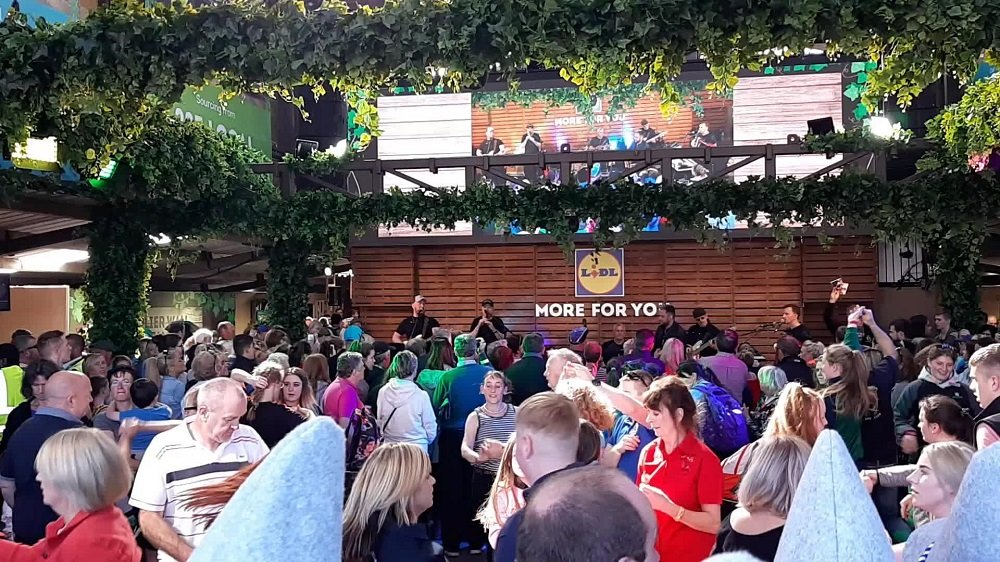“As the communications landscape has changed, so too has customer behaviour. ”
For most people today, their first exposure to a new brand or product is through online advertising and promotion. Does physical, face-to-face follow-up still have any role in the marketing journey?
Trade shows are a long-established platform for doing business. Look no further than the annual National Ploughing Championships, held in Balintrane, Co Carlow this year. The event, attended by nearly 300,000 people, was a clear demonstration of how businesses can benefit from getting up close with their customers to convey the quality of their product and the people and processes behind it.
For the most part, retailers and agri-businesses have excellent online marketing presences. Why, then, do they and many other well-communicated sectors still dedicate resourcing and investment to the traditional sales pitch?
The answer lies in the consumer of today. While, many are first exposed to brand and product online, most are now less willing to be passive actors in the sales process.
Due to this increased confidence, consciousness, and insight, consumers seek to interact with brands to uncover their story, their environmental impact, and why exactly they should hand over their hard-earned cash for their product.
The difference between success and failure
Before investing in a trade show, businesses must be clear about their objectives. Are they driving brand awareness, profiling a new consumer product, generating B2B sales, or influencing government policy?
When developing a strategy to meet these objectives, businesses then need to set success targets and metrics, like footfall or a brand rep survey on customer experience.
The most successful businesses think beyond the day of the event and implement a lead-in marketing campaign so customers are aware of their presence before arriving. They weave the event into their overarching business plans by generating social content for extended marketing campaigns; networking to secure new business leads; and discussing sector challenges with collaborators and competitors.
The event
The traditional setup for a trade show like the Ploughing affords each exhibitor a space to brand as their own and use as a platform to communicate with visitors.
These stands are either staffed by brand reps or by the business owners and entrepreneurs themselves, all grafting to communicate the pros of their product.
In a crowded space, how can exhibitors stand out?
- Companies that match their exhibit to their brand are more readily understood by attendees. At this year’s “Higher Options” education event, University College Dublin could be spotted from all corners because of its clearly visible, recognisable branding and signage. The university’s stand matched the messaging on its website, circulated prospectus, and recruitment materials. Consumers gravitate to things they’re already familiar with.
- Creating an inviting atmosphere is fundamental in a busy space. At the Ploughing, supermarket giant Lidl partnered with Newstalk and constructed a large American-style barn and live stage that lured huge crowds. Their food producers provided delicious samples, and brand reps served hot drinks upstairs in a fundraising partnership with children’s charity Jigsaw. RTÉ’s Daithí O’Shea emceed proceedings, introduced performers, and brought spectators on stage for Lidl challenges.
- The best brands master the basics. They have fully briefed, enthusiastic sales staff and reps. Exhibitors should follow the example of this year’s Enterprise Ireland exhibit at the Ploughing, where attendees were welcomed with clear information and sales pitches on new food products and tech innovations from enthusiastic business owners and entrepreneurs.

Why some brands fail at trade shows
Despite the golden opportunity of a trade show, many companies fail to communicate their brand effectively, either through lack of preparation or an uninspiring stand, or both.
Some brands’ exhibits often lack a company leadership or management presence. At an event where brand exposure is likely to be unusually high relative to the rest of the year, it’s remiss of senior decision-makers not to show up. Their presence will reassure customers, lend authority and insight, and inspire customers to make a purchase or enquiry.
Many businesses fail to adequately brand their exhibits. Even with an exciting product or service, a plain stand won’t make an impact. Companies need to make creative use of their logo, colours, and brand story.
Other exhibitors burn through stock (and cash) by plying attendees with large quantities of free samples. These brands fail to value their product, which leads to limited sales. After all, why would a customer pay when they can get something for nothing?
Many exhibits have lacklustre brand reps who enthusiastically flog product samples. Brands must ensure theirs aren’t wasting time scrolling on their phones or shying away from engaging with potential customers.
Is a trade show worth the investment?
To succeed at a trade show, a brand needs to ask some important questions: How does this trade show fit into our communications and business strategies? What are we trying to tell customers about our brand and products? How will we hook customers away from our competitors? How will we measure success?
Once answered, an intelligent communications strategy and smart marketing tactics will help a company generate immediate- and long-term revenue, make important connections with customers and suppliers, and achieve greater market share.

About the author
Barry is a Client Executive at PR360. As the former President of the UCD Students’ Union, he has experience working on interactive media and social campaigns, engaging students in lobbying government, and achieving change. Barry also has a huge passion for international development and environmental protection.
